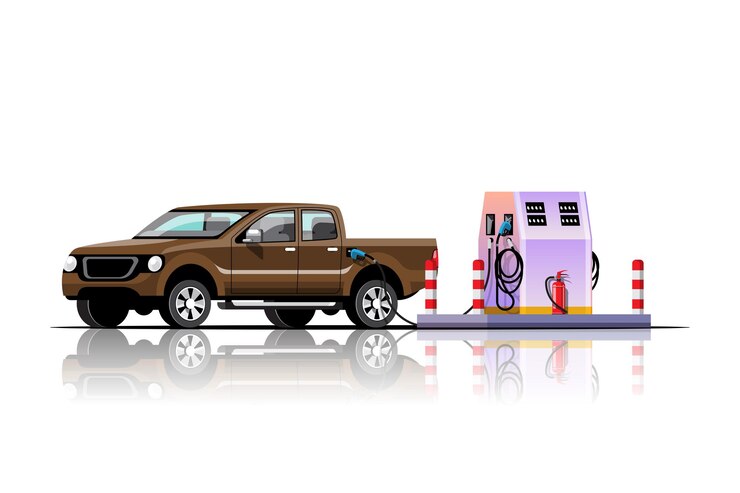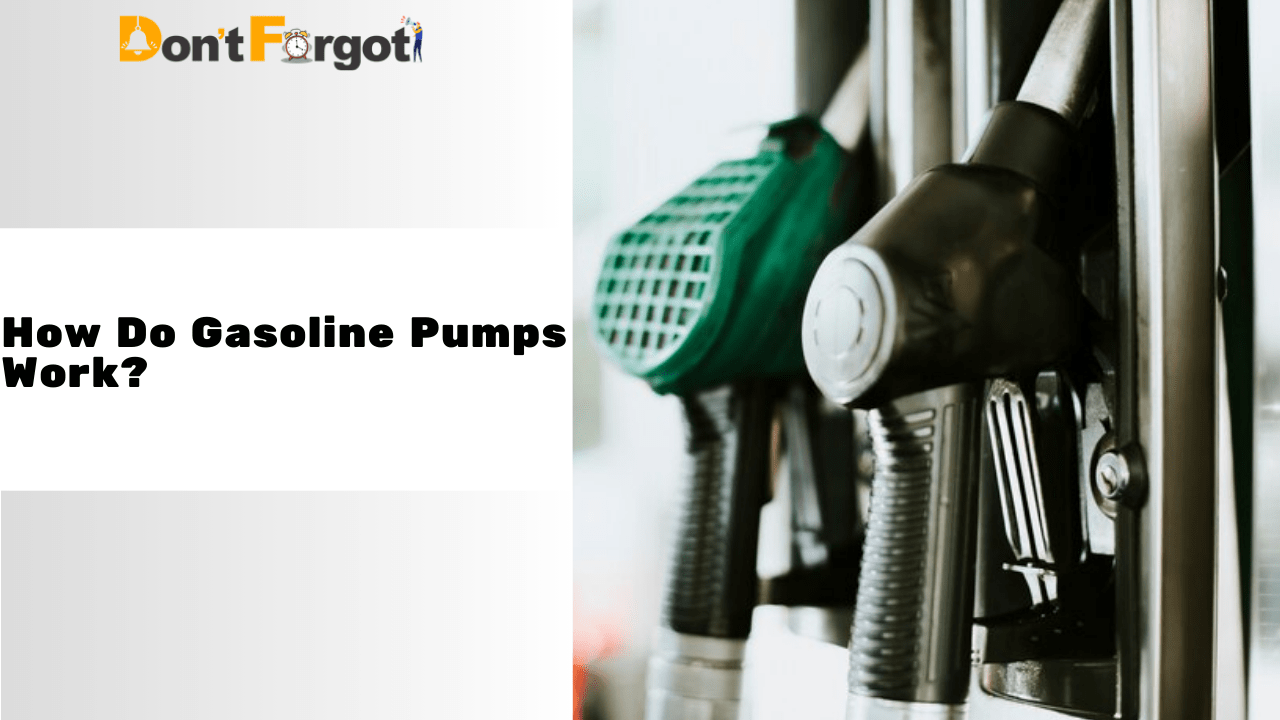Gasoline pumps are vital in ensuring fuel reaches your vehicle safely and efficiently. These pumps use suction and pressure to move fuel from underground tanks to your car’s tank. As the fuel flows, a flow meter tracks the amount dispensed, and sensors ensure accurate filling by automatically shutting off the pump once the tank is full. Understanding how gasoline pumps work can help you appreciate the engineering behind a smooth refuelling experience.
The system’s precision relies on check valves and the Venturi effect, which regulate fuel flow and prevent spills.
How Do Gasoline Pumps Work?
Gasoline pumps move fuel from an underground tank to your vehicle by combining suction and pressure. When you insert the nozzle and begin pumping, the fuel travels through a hose driven by either a submersible pump or a suction pump in the station’s fuel tank.
The flow meter is a key system component. It measures the amount of fuel dispensed and ensures pump accuracy.
How Modern Fuel Pumps Work?
Near the end of the gas pump nozzle, a small hole connected to a pipe runs back into the handle. The Venturi effect generates suction in this pipe. When the tank is not full, the vacuum draws air through the hole, allowing fuel to flow. However, as the fuel level rises and reaches the tip of the nozzle, the hole becomes submerged, cutting off the airflow and stopping the fuel flow.
This causes the vacuum to collapse, triggering an automatic shutoff that stops the pump. This system prevents overflow or spillage, ensuring a safe and efficient refuelling process.
Combining suction, sensors, and mechanical components, such as the check valve and flow meter, ensures smooth operation and accurate fuel delivery.
Gasoline Pump Mechanism Explained
At the core of every gasoline pump is its pumping mechanism. Modern gas stations use electric pumps to draw fuel from underground tanks, pushing it through a series of pipes to the nozzle. Pressing the handle opens a valve, allowing the fuel to flow. Several complex processes work behind the scenes to accurately and safely dispense fuel.
The pump motor generates the required pressure to draw gasoline from the tank and deliver it to the dispenser. Inside, switches and sensors regulate the fuel’s flow and pressure, managing the entire process.
How Fuel Pumps Work: From the Underground Tank to Your Vehicle
How does fuel travel from the underground storage tanks to your car’s fuel tank? It all begins with an electric pump inside the underground tank. This pump uses suction to pull gasoline up through a pipe, directing the fuel into the hose connected to the nozzle, allowing it to flow into your vehicle’s tank.

The pump starts working once you lift the nozzle and choose the fuel grade. A trigger mechanism then opens the valve inside the nozzle, allowing gasoline to flow. The fuel passes through the dispensing system and continues into your car’s tank until the set amount is delivered.
Gas Station Pump Technology: Modern Innovations
Modern gas station pump technology has advanced significantly, incorporating electronic and digital systems to improve accuracy, safety, and convenience. For example, older pumps relied on mechanical systems to measure dispensed fuel, while modern pumps utilized digital meters. These digital meters provide more precise readings and are less prone to mechanical failure.
Most gasoline pumps now have integrated payment systems, allowing customers to pay at the pump with credit or debit cards. Additionally, many pumps have integrated security features to prevent tampering or theft, such as anti-skimming technology to protect card information.
How Gas Pumps Detect a Full Tank: The Automatic Shut-Off Mechanism
One of the most intriguing features of gas pumps is how they know when your tank is full. This automatic shut-off system functions using basic principles of physics. As fuel flows into your tank, it pushes out the air, leading to a rise in pressure. Once the fuel reaches the top, the air pressure shift affects the nozzle’s flow dynamics.
A small sensor within the pump nozzle detects these pressure changes. As the pressure builds when the fuel reaches the top of the tank, this sensor activates the automatic shut-off valve. This stops the fuel flow even if you continue pressing the handle, ensuring a safe refuelling process.
Fuel Dispensing Process: Ensuring Safety and Accuracy
The fuel dispensing process is meticulously engineered to ensure safety and accuracy. The process starts when you place the nozzle into your fuel tank. As you pull the handle, the valve opens, allowing gasoline to flow into the tank.
Fuel travels through the hose and into your tank, where sensors and flow meters monitor the amount being dispensed. If the fuel flow increases or decreases too much, the system automatically adjusts the pressure to ensure a consistent and steady flow rate.
Another safety feature is the grounding wire within the pump, which prevents static electricity from building up and potentially igniting fuel vapours. This grounding system ensures that any static charge is safely dissipated before it can cause harm.
Modern Gasoline Pump Systems: A Technological Marvel
Today’s modern gasoline pump systems are technological marvels, incorporating advanced software and hardware to improve efficiency, accuracy, and user experience. These systems are designed to handle various fuel types, including gasoline, diesel, and even biofuels.
These pumps are much more reliable with digital interfaces and enhanced safety features than their mechanical predecessors. From real-time transaction tracking to remote monitoring of underground tank fuel levels, modern pumps combine engineering brilliance and practical design.
FAQs About How Do Gasoline Pumps Work
How does a gasoline pump control the flow of fuel?
Gasoline pumps manage fuel flow using a combination of valves and sensors. Pressing the handle opens a valve, allowing fuel to move through the hose and into your vehicle’s tank. Throughout this process, sensors track the fuel flow rate to ensure the right amount is dispensed accurately.
What happens if I keep squeezing the pump handle after the tank is full?
When your tank is full, the pump automatically shuts off due to changes in air pressure. Continuing to squeeze the handle will not dispense more fuel, as the system has already closed the valve.
How do modern gas pumps calculate the price of fuel?
Modern gas pumps use digital meters to measure the volume of fuel dispensed and multiply it by the current price per gallon. These highly accurate digital systems communicate directly with the station’s computer system to display the correct price.
Are gasoline pumps safe to use in extreme weather?
Yes, gasoline pumps are designed to operate safely in various weather conditions. They are built with temperature-resistant materials and include multiple safety mechanisms to prevent fuel leaks or electrical issues in extreme heat or cold.
Conclusion
In conclusion, how gasoline pumps work the gasoline pumps may seem simple, but their intricate systems blend mechanical, electronic, and hydraulic components. From drawing fuel from underground tanks to ensuring it flows smoothly into your car’s tank, these pumps are marvels of modern engineering.
Understanding the gasoline pump mechanism gives us a new appreciation for this everyday technology. As modern gasoline pump systems evolve, their safety, accuracy, and convenience will improve, making refuelling even more seamless.

